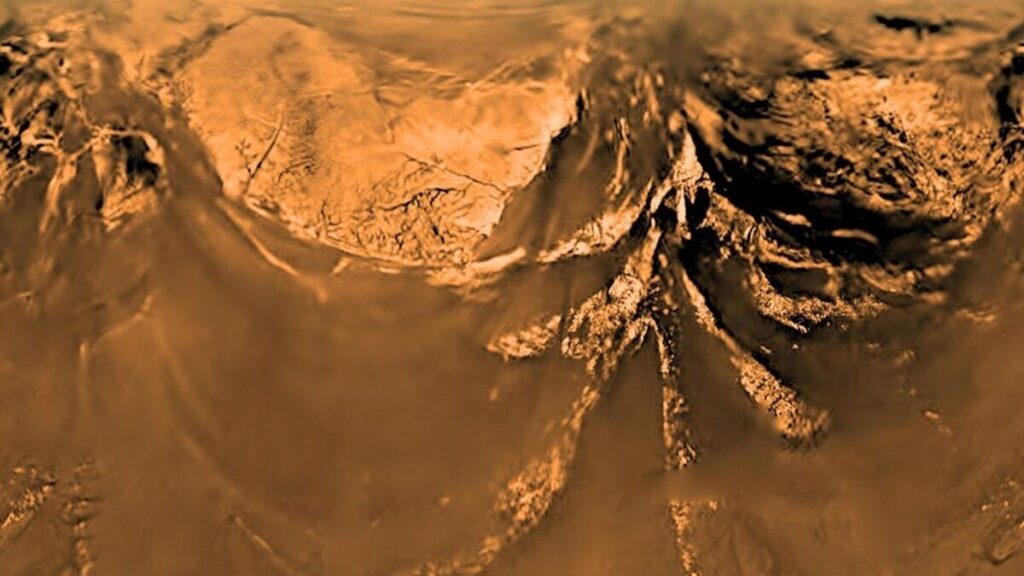On December 25, 2004, the Huygens probe separated from the Cassini spacecraft and landed on Titan’s sandy surface. The probe survived for 72 hours on Saturn’s largest moon, revealing a world that is chemically complex and more Earth-like than expected. For years, scientists have been intrigued by Titan as an alien world that might have the right conditions to host life, albeit in a very different form than on Earth. New research by NASA reveals that molecular precursors to life could form in Titan’s methane lakes, allowing us a chance to learn how life originates and evolves in the universe.
In a recently published paper in the International Journal of Astrobiology, a team of NASA researchers illustrates how vesicles, small, membrane-bound bubble-like compartments or sacs, could form naturally in the lakes of Titan. Vesicles are thought to play a vital role in the formation of life, an important step in making the precursors of living cells. The paper examines how the conditions for life could evolve in a vastly different environment than Earth, shedding light on our search for extraterrestrial life in the universe.
Titan is the only other world, apart from Earth, that’s known to have liquid on its surface. But unlike Earth’s bodies of water, Titan’s lakes and seas are not recommended for swimming, as they contain liquid hydrocarbons like ethane and methane. Water is crucial to life as we know it—but what if Titan’s lakes have what it takes to harbor molecules required for life to evolve?
The paper outlines a process by which stable vesicles might form on Titan based on the data that’s been gathered so far about the moon’s atmosphere and chemistry. On Earth, molecules known as amphiphiles have a split personality, with a hydrophobic (water-fearing) end and a hydrophilic (water-loving) end. When in water, the molecules naturally organize into ball-like spheres, resembling soap bubbles, whereby the hydrophilic part faces outward to interact with the water while its hydrophobic counterpart shies away on the inside of the sphere. This allows the molecules to form complex structures and may have led to primitive cell membranes in early Earth.
On Titan, these vesicles could form thanks to the moon’s complex meteorological cycle, according to the paper. The methane in Titan’s atmosphere forms clouds, which rain on the surface to create river channels that fill up the moon’s lakes and seas. The liquid on the surface then evaporates to form clouds once again. The researchers behind the new study suggest that spray droplets from the rain and the surface of the sea could be coated in layers of amphiphiles. When the droplets land on the surface of a pond, the two layers of amphiphiles meet to form a double-layered vesicle. Over time, the vesicles would be dispersed throughout the pond and would compete in an evolutionary process that could lead to the formation of primitive protocells.
“The existence of any vesicles on Titan would demonstrate an increase in order and complexity, which are conditions necessary for the origin of life,” Conor Nixon, a researcher at NASA’s Goddard Space Flight Center and co-author of the new study, said in a statement. “We’re excited about these new ideas because they can open up new directions in Titan research and may change how we search for life on Titan in the future.”
NASA is preparing to launch Dragonfly, the agency’s first Titan mission, in July 2028. The rotorcraft lander will explore the surface of Saturn’s moon and gather data about its atmosphere and geology. Dragonfly will help scientists better understand the bizarre world where life could form under vastly different conditions.


